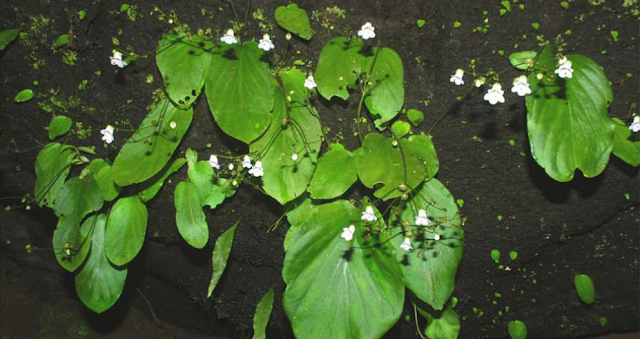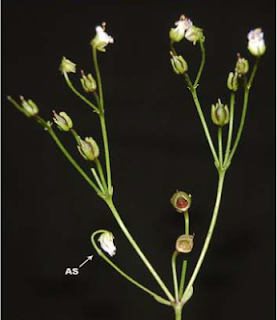Adding one more species to the rich flora of Western Ghats-
a world heritage site and one of the eight hottest biodiversity hot-spots in the
world- researchers have identified and described a new herb from its southern parts.
According to a recent research paper published in the International
journal Rheedea from Indian Association for Angiosperm Taxonomy, the
plant was named Henckelia pradeepiana, to
honour Dr. A K Pradeep, curator at the Calicut University Herbarium who first
collected the specimen in 1997.
 |
| Henckelia pradeepiana, a new plant species identified from southern Western Ghats Image Courtesy: Rheedea |
Spotted from parts of Vellari Mala, a hill tract in Southern
Western Ghats, situated in the Calicut district of Kerala, the single leaved
plant belongs to Gesneriaceae family of perennial flowering plants.
13 year long mystery
solved
The new plant was actually located on damp rocks near the
Olichuchattam waterfall in Vellari mala in Southern Western Ghats in 1997 by Dr
A K Pradeep Kuamr during a botanical survey. However, he was not able to
describe the plant since it remained elusive for a long time since then. According
to the researchers, recurring landslides and resulting change in the water course
could have kept this plant elusive, despite repeated attempts to locate it
again.
 |
| Flowers and fruits of Henckelia pradeepiana Image Courtesy: Rheedea |
The plant is found firmly attached to moist rocks along stream
sides, or on tree barks in shady, humid areas, usually growing associated with
mosses and ferns at elevations between 460 meters to 1160 meters from the sea
level in Western Ghats. According to
reports, the plant usually has a single broadly ovate or oblong leave and in
rare cases, up to 4 leaves.
The flowers on the plant are arranged in cyme or in flat
topped cluster in which the central or terminal one opens first. The flower
clusters are found to have to 1 to 20 flowers on the plant. The bright yellow stigma of the flowers with
strongly expanded lower lip is a remarkable characteristic of the plant. The
usual flowering and fruiting season of the plants occur during July to October.
Differences and
similarities with other Henckelia members
in peninsular India
According to the research paper, close relatives of the plant
found in South India and Sri Lanka have unique tuber like features. However, Henckelia pradeepiana differs from them
with its uniquely shaped, flat discoidal tuber and ovoid, globose thick fruit. Similarly,
the faint blue flowers of the plant are also typical to its relatives in the
peninsular India.
 |
| H. pradeepiana Flower with bright yellow stigma Image Courtesy: Rheedea |
 |
| Side view of H. pradeepiana flower Image Courtesy: Rheedea |
Though the plant which was hitherto unknown to science has been described and christened as per taxonomic norms, not much is known about the details of the ecology of the plant and the ecological services rendered by it. The present reports restricts its distribution to southern Western Ghats of Kerala, however, it is highly likely that the plant can be found in other parts of Western Ghats at similar elevations. The closest relative of the plant, H. missionis, however is reported from Western Ghats from Kanyakumari district in Tamil Nadu which is 400 odd kilometers away from the present record of the new species.
A. Weber of Department of Structural and Functional Botany,
Faculty of Biodiversity, University of Vienna and Santhosh Nampy with the Plant
systematics and Floristics Lab, Department of Botany, St Joseph’s college,
Devagiri in Calicut has also co-authored the paper. The new addition also points out that floral
richness of this biodiversity hotspot still needs more exploration.

G'day
ReplyDeleteThis is great work in finding such a new species & publishing it on this blog.
Love
Mathew
Dear Mathew Naismith
DeleteThanks for the comment.
We just let the common public( those who read our humble blog) about the new findings made by scientists and nature lovers about the hidden treasures of mother nature which we should conserve. the actual work is done by them who work months and years to unravel nature mysteries. so all the credit goes to them.